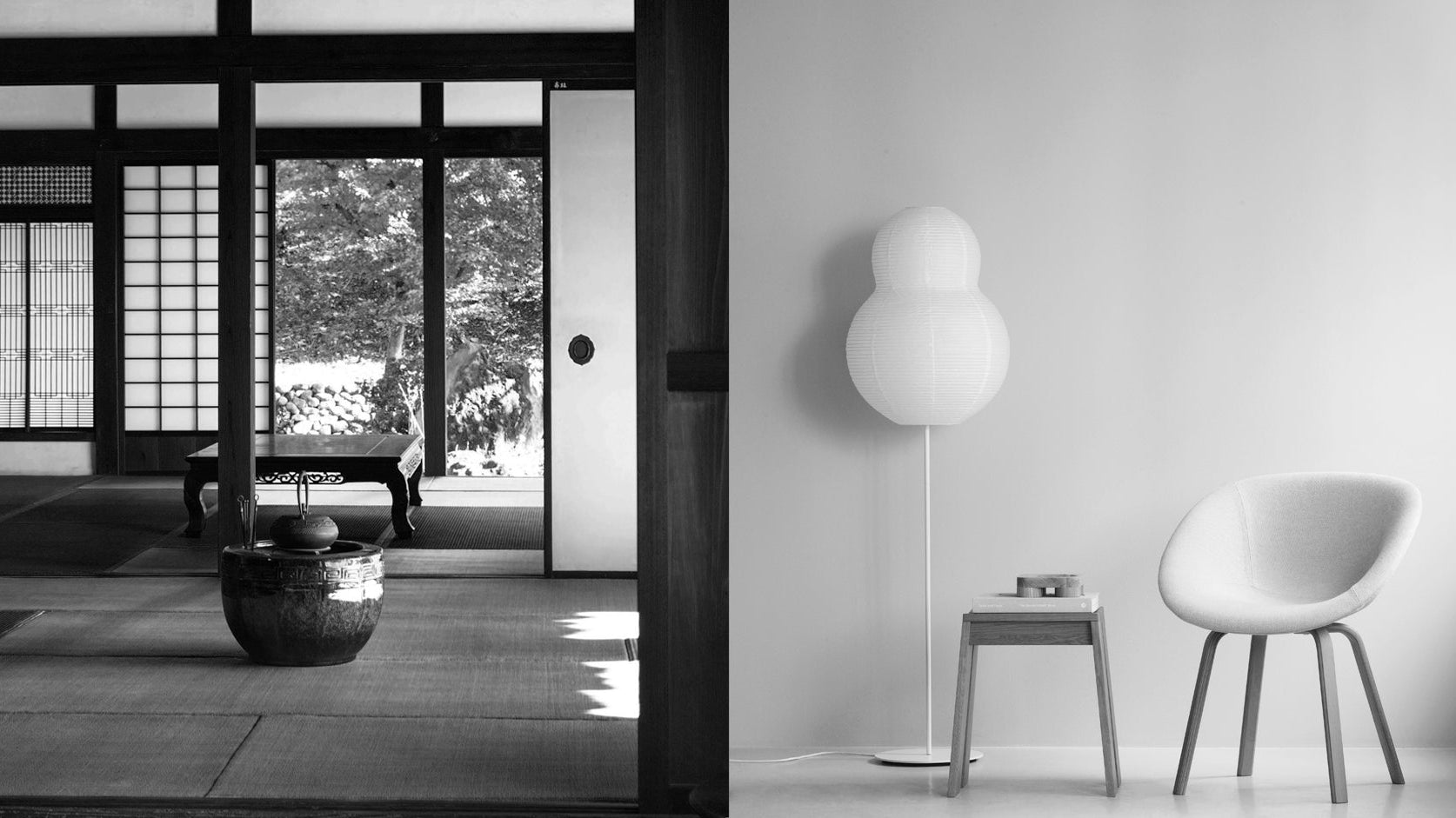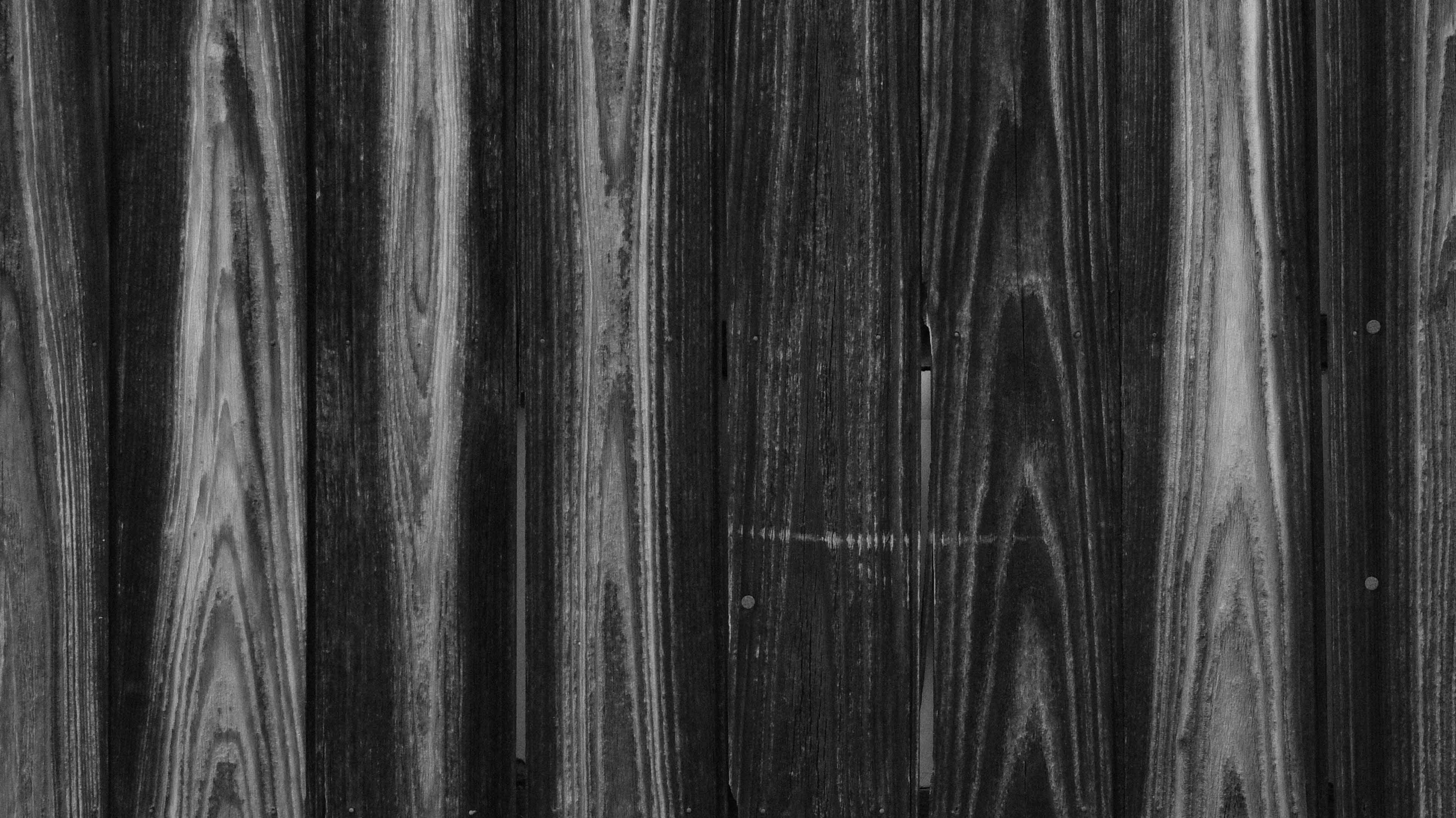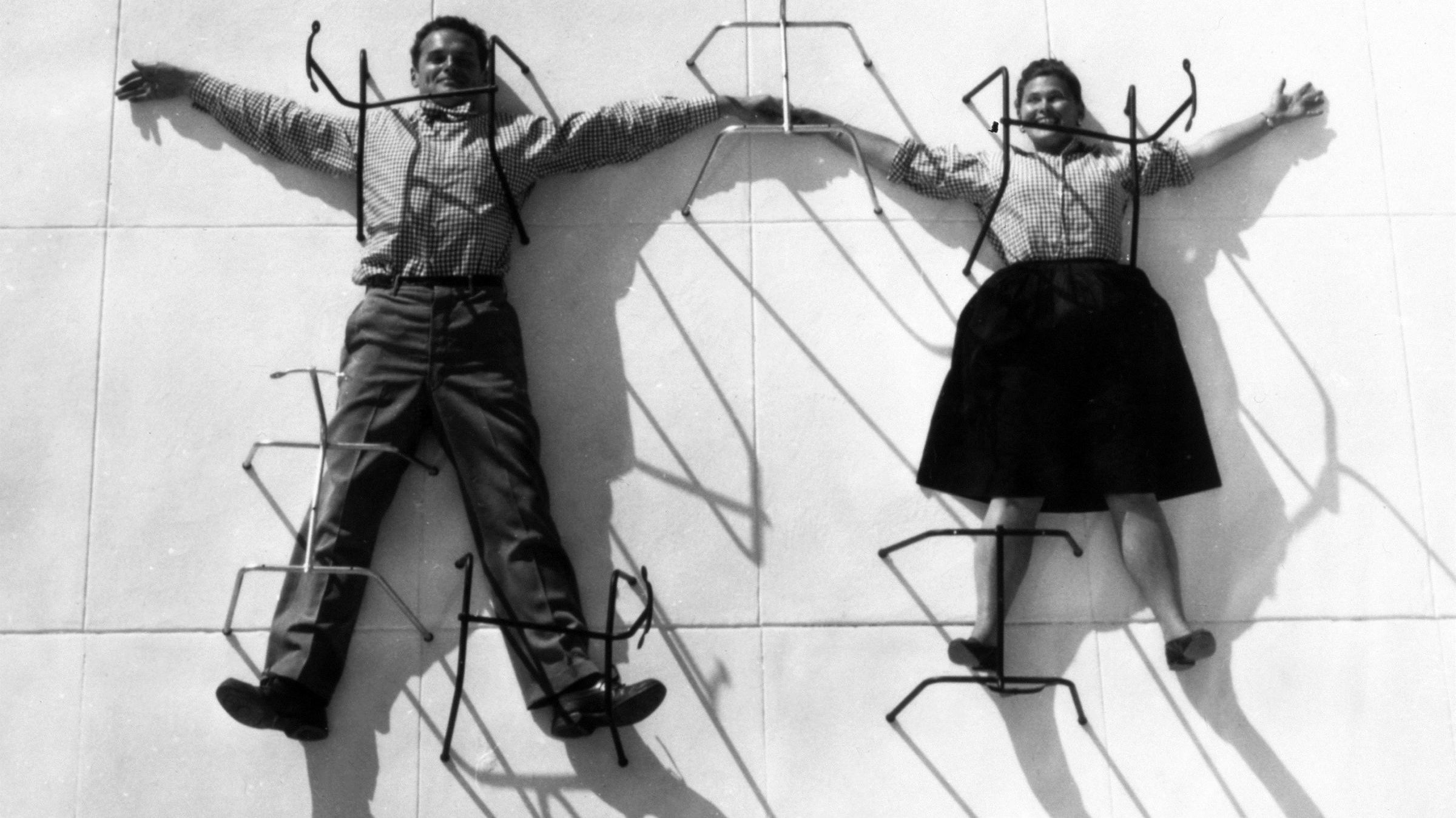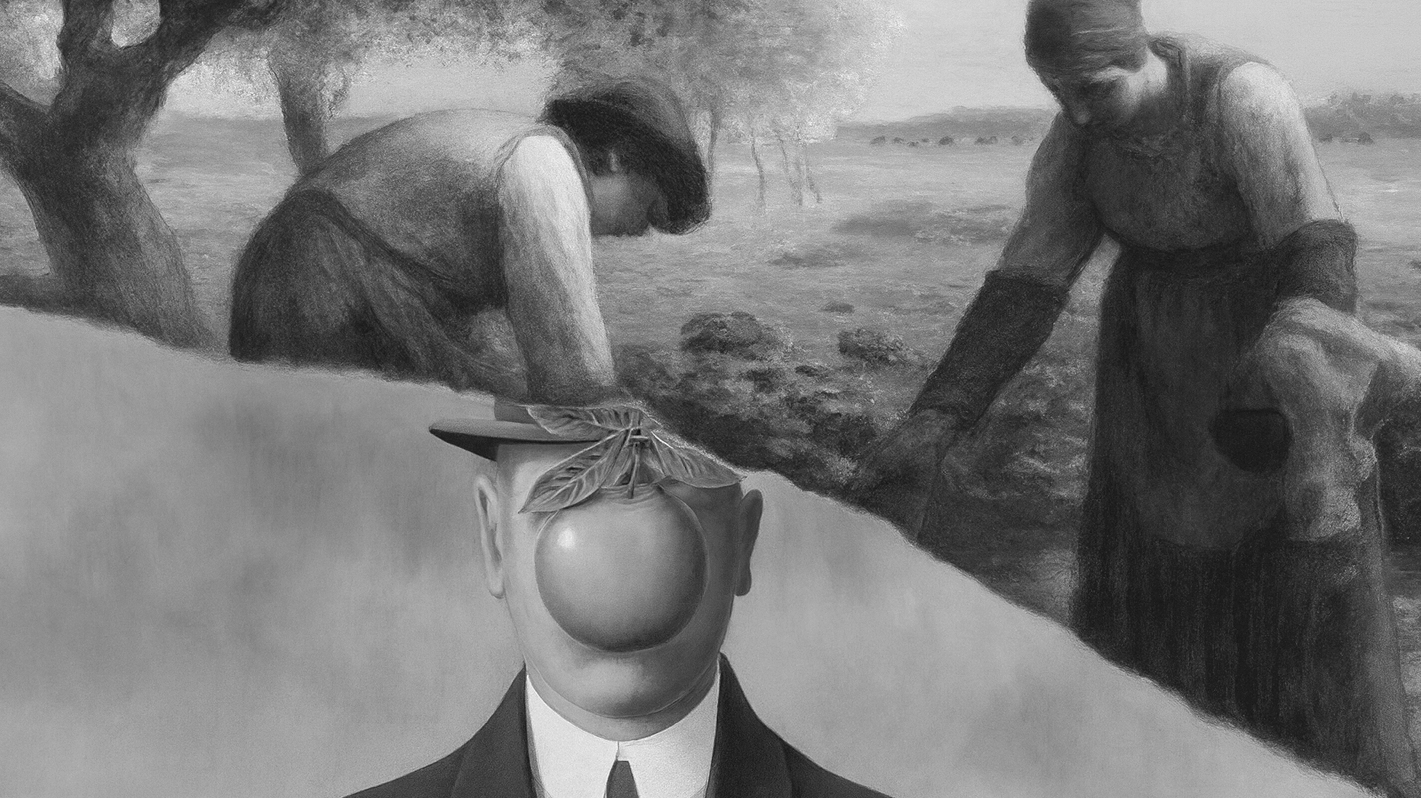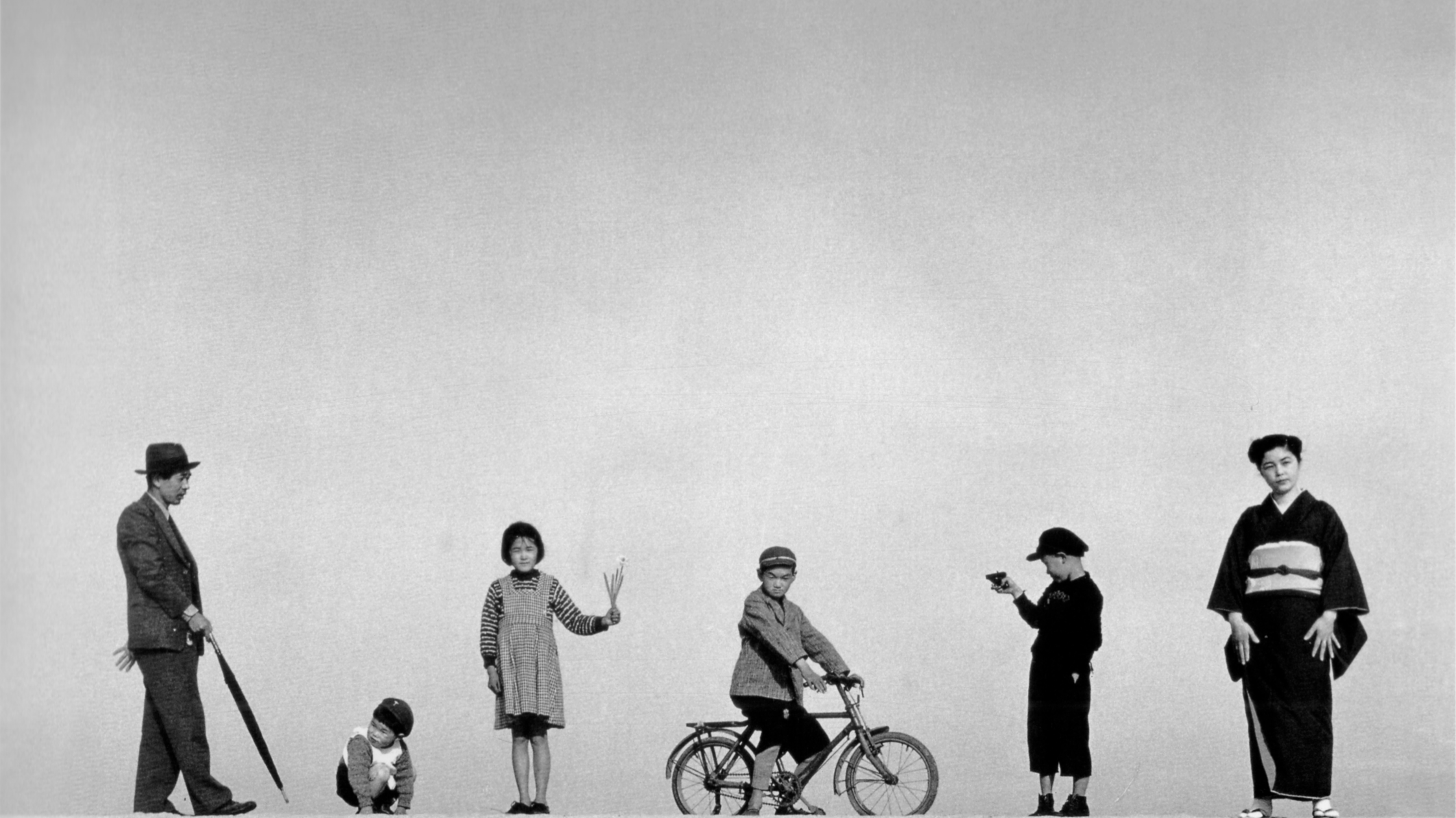
Mel Bochner, Working Drawings and Other Visible Things on Paper Not Necessarily Meant to be Viewed as Art, School of the Visual Arts, 1966.
(What is Conceptual Art? Art is Not About the Object? - dans le gris)
What is Conceptual Art?
(What is Conceptual Art? Art is Not About the Object? - dans le gris)
Conceptual art, which emerged in the 1960s, is a movement where the central focus is not on the finished art object, but rather on the underlying idea or concept driving the work. In other words, conceptual art places a stronger emphasis on the intellectual and philosophical dimensions of the artwork, as opposed to its visual or aesthetic qualities. Conceptual artists fundamentally challenged conventional notions of art. They contended that the idea held more significance than the physical artwork itself, going so far as to propose that the idea, in its essence, constituted the art, and not the physical piece.
(What is Conceptual Art? Art is Not About the Object? - dans le gris)
(What is Conceptual Art? Art is Not About the Object? - dans le gris)
The History of Conceptual Art
(What is Conceptual Art? Art is Not About the Object? - dans le gris)
When discussing the origins of conceptual Art, it is essential to mention Marcel Duchamp. He is often regarded as a significant precursor to conceptual art, with his 1917 creation, the "Fountain," considered one of the first conceptual artworks. Duchamp's use of everyday objects, which he designated as art, foreshadowed the movement's emphasis on ideas over aesthetics. While Duchamp is often seen as a pioneer of conceptual art, it's essential to recognize that the conceptual art movement fully flourished in the 1960s and 1970s, with significant contributions from artists like Sol LeWitt, Joseph Kosuth, and Lawrence Weiner.
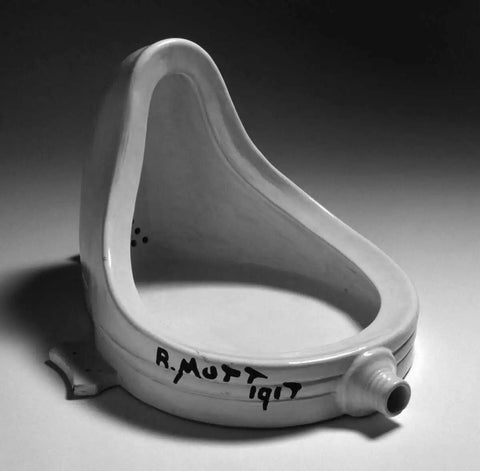
Marcel Duchamp, Fountain, 1917.
(What is Conceptual Art? Art is Not About the Object? - dans le gris)
The conceptual art movement, which emerged in the mid-1960s and continued until the mid-1970s, was international, taking place more or less simultaneously across Europe, North America, and South America. Conceptual art gained prominence during the 1960s as artists began to explore the notion that art was primarily about the concept or idea behind the work rather than the finished product. This marked a reaction against the dominance of Abstract Expressionism and the commercialization of art.
Conceptual artists aimed to escape the growing influence of the commercial art world by emphasizing the importance of thinking and how they made the artwork. They frequently chose art forms that didn't result in a final product, like sculptures or paintings. This made their creations challenging to buy or sell and eliminated the need for them to be displayed in traditional gallery settings.
Sol LeWitt, a pivotal figure in the conceptual art movement, made significant contributions through his groundbreaking 1967 essay, "Paragraphs on Conceptual Art." In this essay, he stressed the importance of ideas over the physical execution of artwork, shifting the artist's role from a craftsman to a thinker. LeWitt's famous "Wall Drawings" exemplify this approach, with detailed instructions for others to execute.
(What is Conceptual Art? Art is Not About the Object? - dans le gris)

Sol LeWitt, Untitled from Squares with a Different Line Direction in Each Half Square, 1971.
The Characteristics of Conceptual Art
(What is Conceptual Art? Art is Not About the Object? - dans le gris)
The characteristics of conceptual art can be concisely described as unique, often appearing random or incomplete, and undeniably avant-garde. However, it's important to note that these characteristics are distinctive and set conceptual art apart from traditional art forms. Here are some key characteristics of conceptual art:
Emphasis on Ideas
(What is Conceptual Art? Art is Not About the Object? - dans le gris)
Conceptual art is defined by its primary focus on ideas and concepts. Unlike traditional art that prioritizes the physical object, conceptual art considers the idea itself as the core of the artwork. This approach challenges traditional art forms, encourages audience engagement, and covers a wide range of themes. For example, Joseph Kosuth's "One and Three Chairs" underscores how the concept takes precedence over the physical object, inviting viewers to contemplate multiple layers of meaning. Conceptual art's focus on ideas still influences contemporary art, encouraging people to think deeply and engage intellectually as a vital part of creating and appreciating art.
• Further Reading: What is Contemporary Art? Definition, Characteristics and Artists
Various forms
(What is Conceptual Art? Art is Not About the Object? - dans le gris)
When encountering conceptual artworks, one quickly realizes their departure from traditional art forms like paintings or sculptures. Conceptual art embraces a wide array of forms, including installations, performances, texts, photographs, and more. It can be viewed as a response to the increasing commercialization of art and the constraints imposed by traditional artistic education.
Performance art holds a significant place within conceptual art. Here, artists use their bodies and actions to convey concepts, often blurring the lines between art and life. These performances can be presented live or documented through photographs and videos.
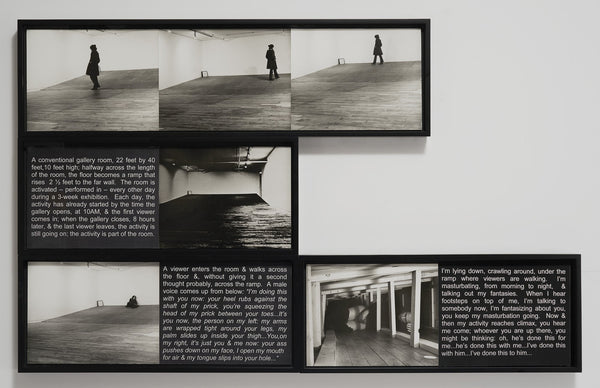
Vito Acconci, Seed Bed, 1972. Graphic Layout, 4 Panels © Estate of Vito Acconci, All Rights Reserved
Vito Acconci's "Seedbed," created in 1972, is a highly influential and controversial performance piece in the world of conceptual art. In this performance, Acconci lay hidden under a false floor in a gallery and spoke aloud his fantasies about the visitors walking above him. The piece explored voyeurism, intimacy, and the boundary between public and private space.
Text and Language as a Tool
(What is Conceptual Art? Art is Not About the Object? - dans le gris)
Conceptual art strongly emphasizes the use of text and language as central and powerful tools for artistic expression. This characteristic is a defining feature of the movement and has led to the creation of art that challenges traditional notions of visual aesthetics. Conceptual artists employ written or spoken words to express ideas, provide instructions, or challenge conventional meanings. Text-based art can take the form of manifestos, statements, or narrative pieces. Furthermore, they use common words, phrases, and expressions in ways that disrupt traditional linguistic boundaries. This linguistic innovation can generate new perspectives and stimulate critical thinking.
For instance, Lawrence Weiner is a conceptual artist known for his text-based art, which often takes the form of written statements or instructions. In his work "A 36" x 36" Removal to the Lathing or Support Wall of Plaster or Wallboard from a Wall," created in 1968, Weiner presents a straightforward text-based instruction. The work's title describes the action: removing a section of a wall measuring 36 inches by 36 inches to reveal the lathing or support wall behind it. This artwork exists solely as a written statement, without any physical object.
A 36" x 36" Removal to the Lathing or Support Wall of Plaster or Wallboard from a Wall" by Lawrence Weiner.
Art is Not About the Object
(What is Conceptual Art? Art is Not About the Object? - dans le gris)
Like we mentioned earlier, conceptual art places greater emphasis on the concept, redefining the idea of art by highlighting that the idea or concept behind the artwork is more significant than the physical object. In this context, the concept itself becomes art, and turning that concept into a physical object is considered a mere formality. Conceptual art often involves the audience actively, inviting viewers to complete tasks, take actions, or interpret the concept, making them an integral part of bringing the artwork to life.
Minimal Aesthetics
(What is Conceptual Art? Art is Not About the Object? - dans le gris)
While aesthetics are not the primary focus, some conceptual art features a minimalist aesthetic, characterized by simple and unadorned forms and structures. By minimizing aesthetic elements, conceptual art aims to diminish subjective interpretations based on visual appeal, ensuring that the audience's attention is primarily directed towards the intellectual aspects of the work.
Conceptual Art and Minimalism
(What is Conceptual Art? Art is Not About the Object? - dans le gris)
Minimalism and the conceptual art movement of the 1960s and 1970s revolutionized our comprehension of space and materials. While conceptual art and Minimalism are distinct movements, they occasionally intersect, as some artists blend elements of both in their work. For instance, both conceptual art and Minimalism often prioritize simplicity in their visual presentation. Minimalism reduces art to its most basic forms, while conceptual art may employ minimal aesthetics to direct attention to the idea. Moreover, conceptual art and Minimalism both engage viewers on an intellectual level. Minimalism encourages viewers to contemplate the essence of the form, while conceptual art invites intellectual reflection on the concept or idea.
The most significant way to distinguish between Minimalism and conceptual art is their focus. Minimalism centers on the visual and formal qualities of the art object, emphasizing the relationship between form, space, and materials. In contrast, conceptual art prioritizes the concept or idea behind the artwork, often downplaying the visual or aesthetic qualities. Furthermore, Minimalism often uses traditional artistic mediums, such as sculpture and painting, with a focus on their physical properties. But conceptual art can encompass a wide range of mediums, including text, language, installations, and performances.
• Further Reading: Minimalism in Art: Definition, Characteristics and Artists
The Objections and Criticism of Conceptual Art
(What is Conceptual Art? Art is Not About the Object? - dans le gris)
After discussing the essence of conceptual art, what are your thoughts on this art form? Objections to conceptual art are not unusual. Typically, we connect "art" with aesthetics. Nevertheless, conceptual art introduces a fundamentally distinct concept. In the past, art was predominantly centered around tangible objects that garnered respect. However, conceptual art revolutionized this notion by emphasizing the communication of ideas and actions over the creation of physical objects. It left behind minimal physical traces. These ideas expanded the field of what could be considered a work of art.
Some critics and viewers may struggle to comprehend or appreciate conceptual art. Its departure from traditional visual appeal, including the absence of recognizable objects or technically skilled artworks, can make some feel disconnected from the work. Furthermore, conceptual art challenges conventional notions of art and the artist's role, which may unsettle those who value craftsmanship and traditional art forms. Simplistic in its appearance, some may perceive conceptual art as lazy and question whether it demands the same level of artistic skill and effort as more traditional art forms.
Conceptual art emerged as a response to the commercialization of the art world. It sought to challenge the prevailing notion that art was primarily a commodity for buying and selling. Instead, conceptual artists emphasized that art should revolve around the ideas and concepts underpinning the artwork, rather than the physical object itself. This shift aimed to subvert the traditional art market, galleries, and museums as the sole arbiters of art, and it fundamentally questioned the idea of art as a mere commodity.
Lawrence Weiner succinctly captured this sentiment when he stated: "Once you know about a work of mine, you own it. There's no way I can climb inside somebody's head and remove it." For many conceptual artists, their work can only be fully understood through accompanying documentation, such as photographs, written texts, or displayed objects. Some might argue that these supporting materials are not the art itself, but rather manifestations of it.
Conceptual Artists and Conceptual Artworks Examples
(What is Conceptual Art? Art is Not About the Object? - dans le gris)
1. Joseph Kosuth
(What is Conceptual Art? Art is Not About the Object? - dans le gris)
Joseph Kosuth, a pioneer of conceptual art and installation art, has been at the forefront of language-based works and appropriation strategies since the 1960s. His consistent exploration delves into the production and role of language and meaning within art. In 1965, he created his first conceptual artwork, "One and Three Chairs," which presented an actual chair, its photograph, and a text providing the definition of the word "chair." Kosuth's work prompts us to reconsider the essence of a chair in our perception: is it the physical object we observe and utilize, or is it the linguistic term "chair" that we employ to recognize and convey its existence to others?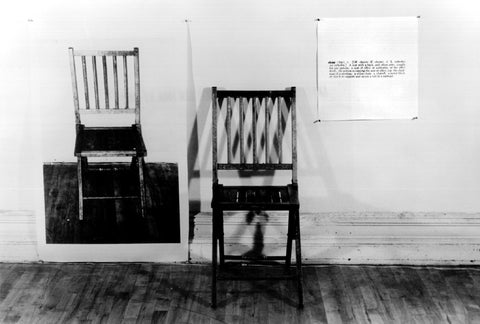
Joseph Kosuth, One and Three Chairs, 1965.
2. Yoko Ono
(What is Conceptual Art? Art is Not About the Object? - dans le gris)
Yoko Ono is a Japanese artist and musician who was an influential practitioner of conceptual and performance art in the 1960s. She also gained international fame as the wife and artistic partner of musician John Lennon. Yoko Ono first gained prominence in the 1960s as part of the Fluxus movement, a group of avant-garde artists who sought to break down the boundaries between art and everyday life. Ono's early conceptual artworks often featured instructions and ideas, inviting viewers to participate in the creative process.
"Cut Piece" is a pioneer of performance art and participatory work first performed by Yoko Ono on July 20, 1964. In "Cut Piece," Yoko Ono sits on a stage in front of an audience. She is dressed in her best suit, and a pair of scissors is placed in front of her. The audience is informed that they are invited to approach the artist one by one and use the scissors to cut a piece of her clothing. As each person steps forward to cut, they are making a decision about how much they are willing to expose or "cut away."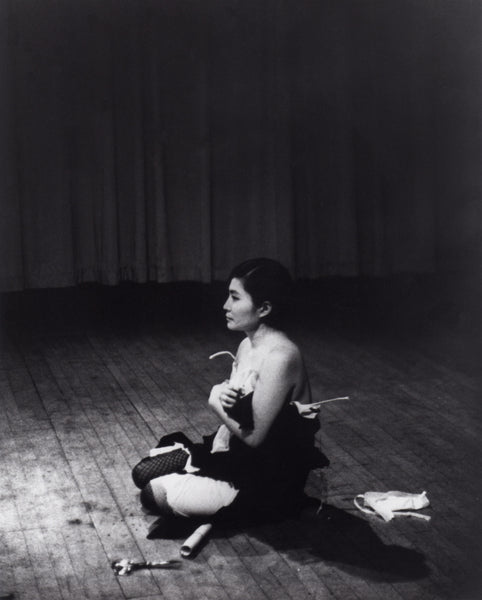
Yoko Ono, Cut Piece, 1964.
3. Douglas Huebler
(What is Conceptual Art? Art is Not About the Object? - dans le gris)
Douglas Huebler is an American Minimal sculptor and a pioneer of conceptual art. By the late 1960s, he had abandoned painting and sculpture, and he is primarily known for his work that combines short written statements, usually containing a description of a structure or system, with other materials such as photography, drawings, and maps. His work wryly deconstructs the ways in which meaning is derived from visual information.
In 1969, Douglas Huebler expressed his artistic philosophy by saying, "The world already has plenty of objects, some more interesting than others, and I don't want to create more objects. Instead, I prefer to simply record things based on when and where they exist."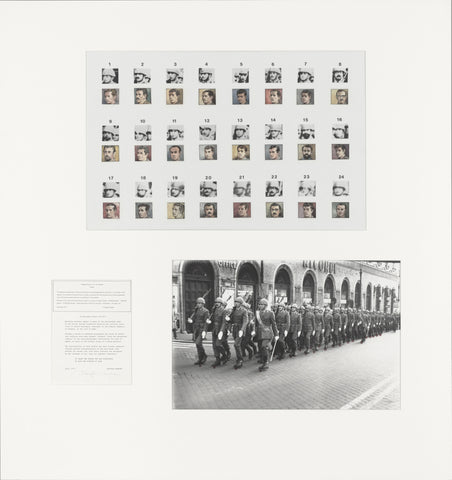
Douglas Huebler, Variable Piece #70: Global 81, 1973.
Two years later, he initiated a project called "Variable Piece #70: Global 81" with a unique goal: to document every single person on the planet before his own lifetime ended. This conceptual artwork involved capturing countless images of people in public situations, such as a group of marching soldiers. He also created individualized paintings of their faces without helmets. The idea was to capture a moment in time and place, emphasizing the transitory nature of human existence and the potential for change and variability.
4. Barbara Kruger
(What is Conceptual Art? Art is Not About the Object? - dans le gris)
Barbara Kruger is an American conceptual artist and collagist associated with the Pictures Generation. She is best known for her distinctive collage style, which incorporates black-and-white photographs overlaid with declarative captions presented in white-on-red Futura Bold Oblique or Helvetica Ultra Condensed text. Kruger's artistic mediums encompass photography, sculpture, graphic design, architecture, video, and audio installations. Within the context of Kruger's artistic portfolio, her incorporation of text, imagery, and critical messaging aligns her work with the principles of conceptual art.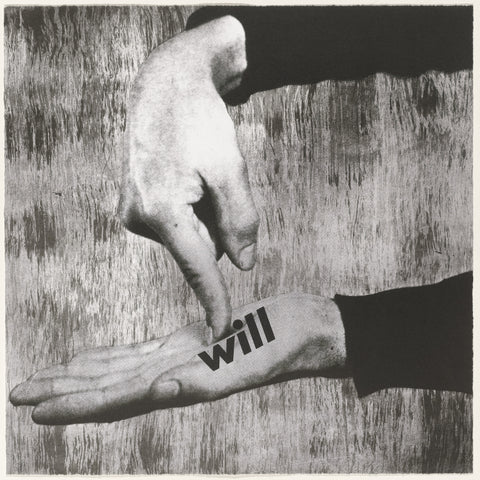
Barbara Kruger, Untitled from Untitled (We Will No Longer Be Seen and Not Heard), 1985.
5. Marina Abramović
(What is Conceptual Art? Art is Not About the Object? - dans le gris)
Marina Abramović is a Serbian conceptual and performance artist. Her work explores body art, endurance art, the relationship between the performer and the audience, the limits of the body, and the possibilities of the mind.
Initially, Abramović was a painter, but she later shifted her focus to conceptual artwork, sound pieces, and performance art. In 1973–74, she performed a series of works called "Rhythm," designed to push the boundaries of her body and mind. For instance, in "Rhythm 2," she experimented with drugs that induced convulsions or seizures. In 1975, she created "The Lips of Thomas," during which she subjected herself to cutting, beating, and freezing. Many of her early works were documented through photographs, and she would later use video to capture their essence.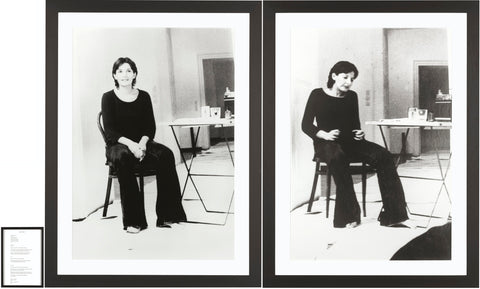
"Rhythm" was a two part performance undertaken by Marina Abramović in 1974.
6. Sol LeWitt
(What is Conceptual Art? Art is Not About the Object? - dans le gris)
Sol LeWitt was an American prominent artist associated with conceptual art. Many of his artworks can be considered examples of conceptual Art. LeWitt's work often involved the use of basic geometric forms, mathematical concepts, and systems to create art. He is known for his conceptual and minimalist approach to art creation, emphasizing the idea or concept behind the artwork over traditional craftsmanship.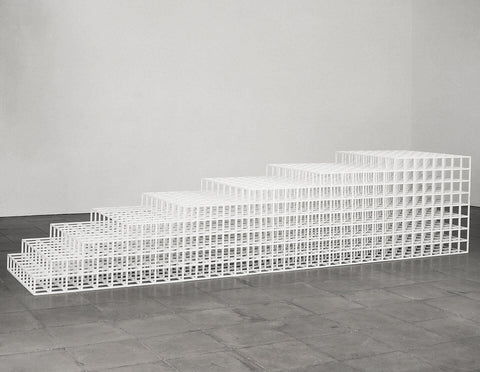
Sol LeWitt, Open Geometric Structure 1, 1990.
7. John Baldessari
(What is Conceptual Art? Art is Not About the Object? - dans le gris)
American conceptual artist John Baldessari was born in National City, California, in 1931. Similar to Marina Abramović, he was initially a painter, but in the mid-1960s, Baldessari began to integrate text and photography into his canvases. He became well known for incorporating found photography and appropriated images into his work.
One of his most famous pieces is "I Will Not Make Any More Boring Art," in which he repetitively wrote this sentence as a form of self-imposed punishment, questioning the nature of art, creativity, and repetition. John Baldessari's conceptual artworks continue to be celebrated for their intellectual depth, artistic innovation, and their ability to challenge viewers to think critically about the relationship between image and text, as well as the nature of contemporary art itself.
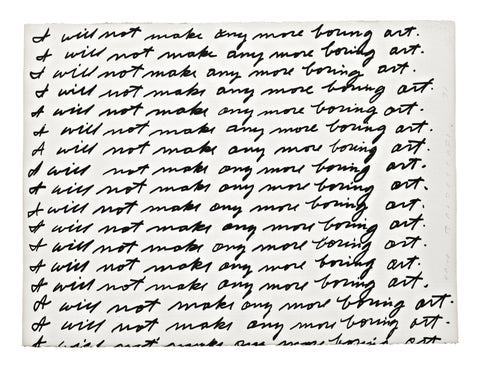
John Baldessari, I Will Not Make Any More Boring Art, 1971.
8. Lawrence Weiner
(What is Conceptual Art? Art is Not About the Object? - dans le gris)
Lawrence Weiner was born in the Bronx, New York. As one of the leading figures in the conceptual art scene in the late 1960s, Weiner was among the first to propose a new relationship with art and to redefine the status of the artist. His artworks typically consist of text-based pieces that convey ideas, concepts, or instructions, rather than traditional visual representations. One of his most famous and iconic artworks representing conceptual art is titled "As Long as It Lasts" (1968).
9. On Kawara
(What is Conceptual Art? Art is Not About the Object? - dans le gris)
On Kawara was an influential Japanese conceptual artist. He devoted his life to exploring ideas of place and time through art based on language and numbers. Most of Kawara's artworks are part of series that catalog his daily life and routines in existential and meditative ways. He is recognized as a pioneer of conceptual art in the 1960s.
Most famously, he painted his Today series, creating the first of his Date Paintings in 1966. These Date Paintings are monochromatic canvases in red, blue, or gray, upon which only the date is painted in white. They constitute the Today series that he continued to produce throughout his life. Although the Today series ended with Kawara's passing, the influence of this pioneering conceptual artist lives on.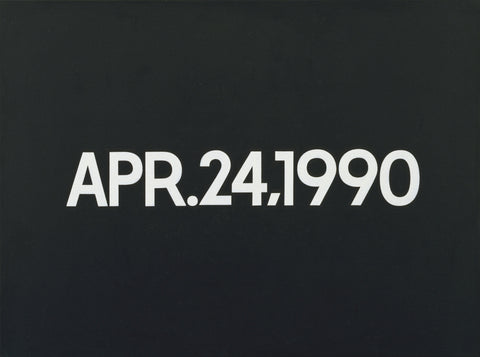
On Kawara. APR. 24, 1990. 1990.
10. Keiji Uematsu
(What is Conceptual Art? Art is Not About the Object? - dans le gris)
Keiji Uematsu is a conceptual artist associated with the post-war Japanese art movement Mono-ha. Uematsu visually expresses invisible forces and their relationships through various media and objects, including photographs, videos, and sculpture. His interest in exploring the relationships and interactions between the body and the object, the object and the environment, and among all of them, has intensified over the past fifty years, coinciding with a fascination for physics and astronomy, especially in relation to gravity, gravitation, and space.
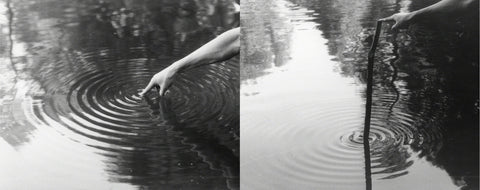
Keiji Uematsu Wave Motion I, 1976.
(What is Conceptual Art? Art is Not About the Object? - dans le gris)
Continue Reading:
• What is Performance Art? From Concept to Action
• What is Contemporary Art? Definition, Characteristics and Artists
• Montage in Art: Definition, Photomontage, and Artists
(What is Conceptual Art? Art is Not About the Object? - dans le gris)
About Us
Dans Le Gris is a brand that began with everyday jewelry, fusing minimalist and artistic elements. Our objective is to enrich daily life with designs that are pure, timeless, and unique.
(What is Conceptual Art? Art is Not About the Object? - dans le gris)
In our journal, we provide irregular updates featuring articles about art, culture, and design. We aspire to furnish our readers with profound insights and inspiration across a broad array of creative subjects. From the daily inspirations found in art and design to the timeless beauty of traditional craftsmanship and philosophy, our curated content encompasses diverse aspects of life. We hope you enjoy our content, and thank you for being here.
Shop Now
↪ Follow us for more updates: YouTube | Instagram

